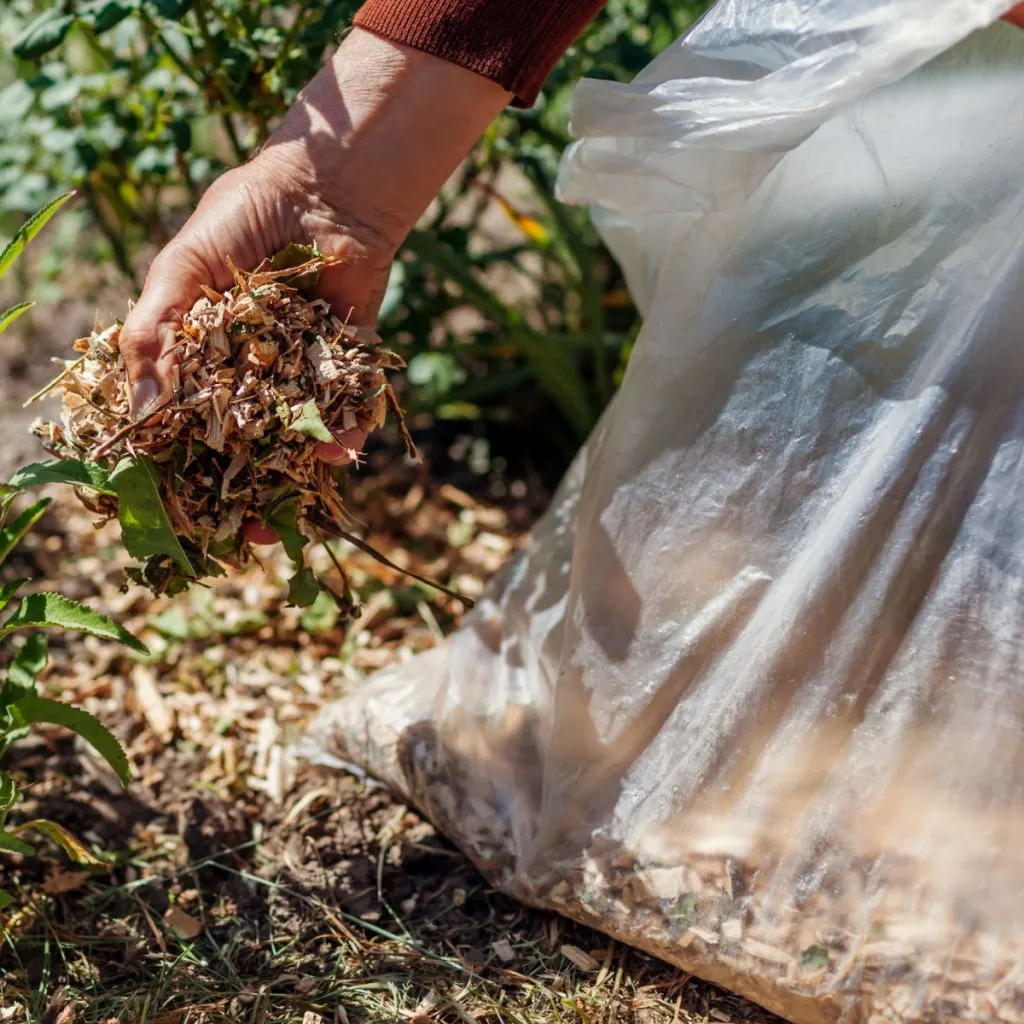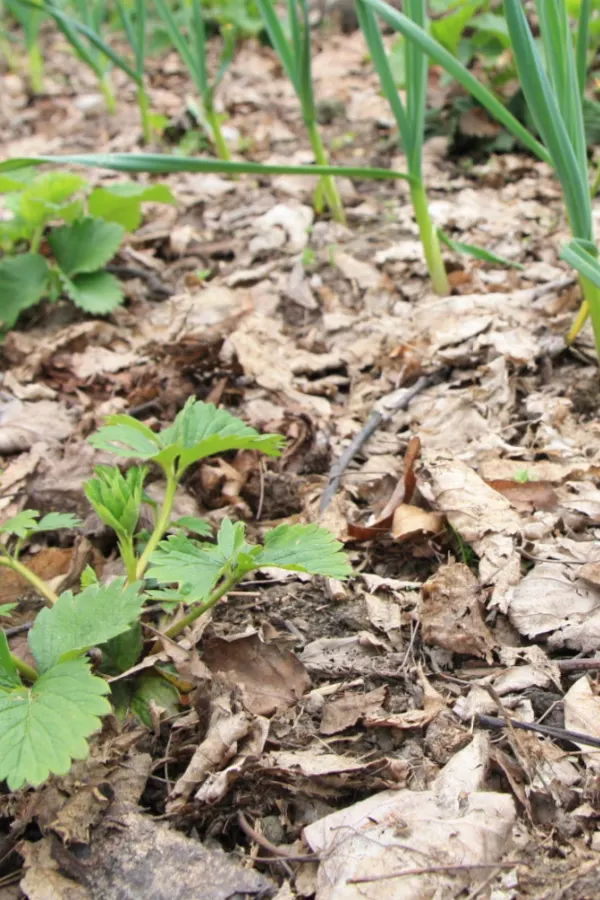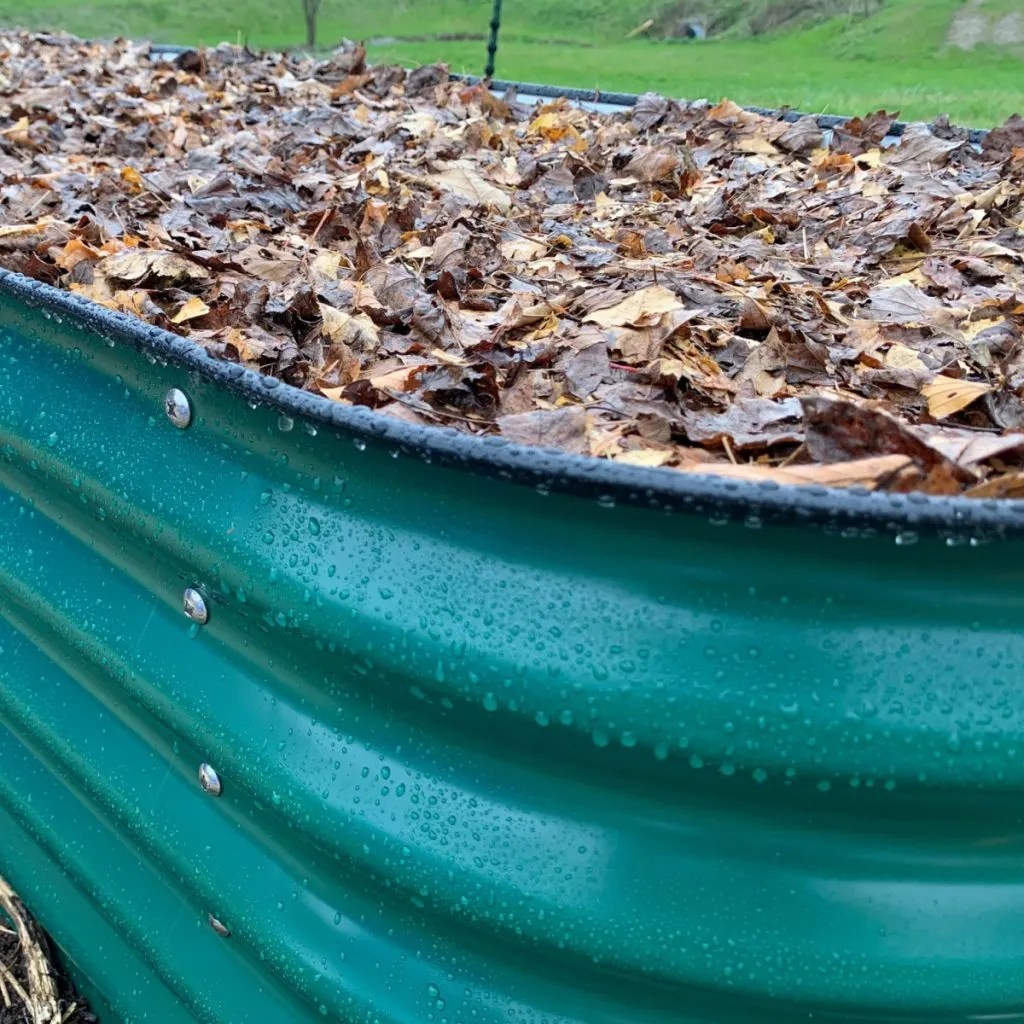Did you know that one of the easiest and best methods to boost the health of the soil in your gardens and flowerbeds and protect the perennial plants you have growing in them is to use all of the leaves falling from your trees this fall?
Although raking and bagging leaves might feel like a dreaded task, leaves are actually a valuable resource. They can help nourish and protect your garden, flowerbeds, shrubs, and trees. And the best part? They’re completely free!
Leaves are packed with nutrients and trace minerals. As they break down, they return those nutrients to the soil, feeding your plants and making your soil healthier. Plus, they’re great as mulch to shield your plants and soil, especially over the winter.

Whether left whole, shredded, or mixed with grass clippings, there are so many ways to use leaves this fall. So, before you rake them out to the curb for to be whisked away – check out these easy ways to make the most of them in your garden!
The Best Ways To Use Leaves In Gardens And Flowerbeds
Mulch and Protect Perennials, Roses, and Shrubs
Perennials, roses, and shrubs need protection from the harsh winter. And leaves are the perfect choice to use as a fantastic natural insulator!
A thick layer of leaves (three to four inches deep) around the base of your plants can protect roots from constantly freezing and thawing. This is especially important during extreme temperature swings, where freezing and thawing can damage plants quite quickly.
On top of that, the layer of leaves helps keep weeds from growing around your plants, which means less competition for nutrients. Leaves can also protect cold-sensitive crops like garlic, onions, blueberries, strawberries and asparagus, keeping them safe through the winter.

Build The Perfect Fall Compost Pile – The Best Ways To Use Leaves In Gardens And Flowerbeds
If you’ve been struggling to find enough materials for your compost pile, fall is the perfect time to change that! Fallen leaves provide an ideal base to create a big compost pile that can break down fast and be ready to use by next spring and summer.
Leaves are an excellent “brown”, carbon-rich material for composting. Since a good compost pile should have a balance of three to four parts “brown” for every part “green,” – leaves are the perfect solution.
Some leaves are better than others for composting. Maple, ash, birch, ornamental, and fruit tree leaves are great, while oak leaves should be added in smaller amounts to avoid making the compost too acidic. A good rule is to keep oak leaves to about 10% to 20% of the pile. See our article: 3 Leaves You Should Never Compost Or Use In Gardens & Flowerbeds!
To help leaves break down faster, always shred them before adding them to your compost pile. The smaller the pieces, the quicker they’ll decompose. You can easily shred them with a lawnmower. Adding some old compost or a compost starter to your pile is also important to speed up the process. Affiliate Link: Compost Starter

Using Leaves as a Natural “Cover Crop” – The Best Ways To Use Leaves In Gardens And Flowerbeds
Don’t have time to plant a cover crop in your garden this fall? Or, are you looking for a great way to power and protect the soil in your raised beds? Leaves are the perfect substitute, and they’re free!
Leaving your soil bare over the winter can cause damage. Winter winds, rain, and snow can wash away your topsoil, and exposed soil can allow weed seeds to settle in and sprout next spring. By covering your garden or raised beds with a thick layer of leaves, you can protect it from both erosion and weeds.
When covering, start with a few inches of shredded leaves to add nutrients as they break down. Then, top it off with a layer of whole leaves to create a stronger barrier that will stay in place.
Next spring, you can mulch the whole leaves by mowing over them, or leave them on top as they are. For raised beds you can simply pull off the layer of protective whole leaves, or mulch them into the soil as well. They’ll break down over time and help enrich your soil with little effort on your part.
Make Leaf Mold for Your Garden – The Best Ways To Use Leaves In Gardens And Flowerbeds
If you don’t have a compost pile, you can still use your leaves to make leaf mold. Leaf mold is an amazing, rich, soil-like material that helps improve soil structure and holds moisture. And it’s made entirely from leaves!

Unlike compost, leaf mold doesn’t heat up. Instead, the leaves slowly break down into a dark, crumbly material that’s perfect for using in your garden or flowerbeds. To make it, just pile up your leaves in a corner of your yard. For faster results, shred the leaves first.
Keep the pile moist and turn it every few weeks to help it decompose. Shredded leaves can turn into leaf mold in as little as six months, while whole leaves can take a year or more to break down.
Save Shredded Leaves for Next Spring – The Best Ways To Use Leaves In Gardens And Flowerbeds
Last but not least, it’s a great idea to shred and save some of those leaves for next spring! Shredded leaves can be a great addition to your spring garden. They can be mixed into planting holes, raised beds or containers to add nutrients and improve soil health.
Shred a large batch of leaves now and store them in a pile with a cover. By next spring, you’ll have a ready-to-use soil booster for your garden. Here is to using leaves in your gardens and flowerbeds this fall – not only is it a simple and natural way to boost your soil’s health this fall, but a great way to protect your plants too! For more tips on keeping your flowerbeds weed-free, see 3 Simple Tips That Will Keep Your Flowerbeds Weed Free This Year – Without Spraying! And for more information on fall care tips to keep your landscape looking great, be sure to check out: How To Plant Grass Seed In The Fall For A Thick Lawn Next Spring – 3 Big Secrets To Seeding!
This Is My Garden
Follow Our Facebook Page For Great Gardening Tips And Advice! This Is My Garden Facebook Page
This Is My Garden is a garden website created by gardeners, for gardeners. Jim and Mary Competti have been writing gardening, DIY and recipe articles and books and speaking for over 15 years from their 46 acre Ohio farm. They publish three articles every week, 52 weeks a year. Sign up today to follow via email, or follow along!
